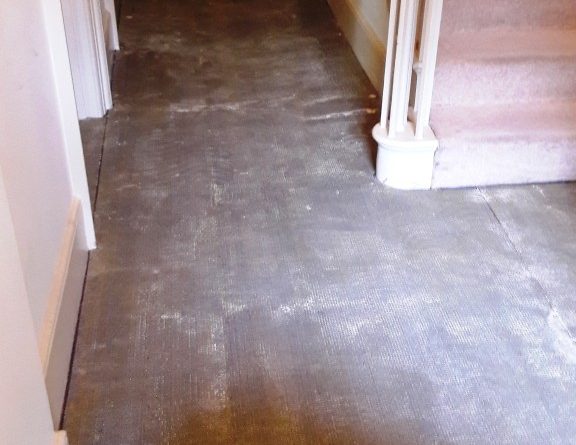Glue Stained Sandstone Hallway Restoration in Carbrooke, Norfolk
This was perhaps the most challenging restoration we have been presented with to date.
The work involved removing carpet and underlay from a long Yorkstone tiled hallway at a beautiful old Grange in Carbrooke on the outskirts of Watton and restoring the flagstones to their original glory. These pavers are a type of Sandstone, a carboniferous sedimentary rock consisting of quartz, mica, feldspar, clay and iron oxides quarried in Yorkshire and having a rich sandy colour with a slightly sparkling surface.
On lifting the carpet, we found, to our dismay, that the rubber-backed underlay had been firmly stuck down to the surface of the stone with what appeared to be a thick layer of yellowing impact adhesive which covered the entire area right up to the thresholds and skirting boards.
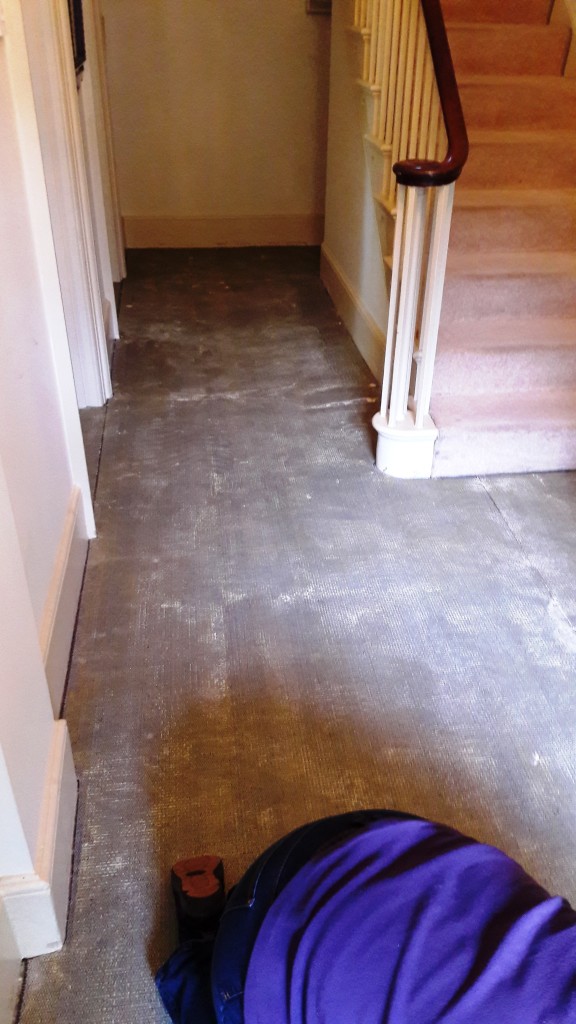 |
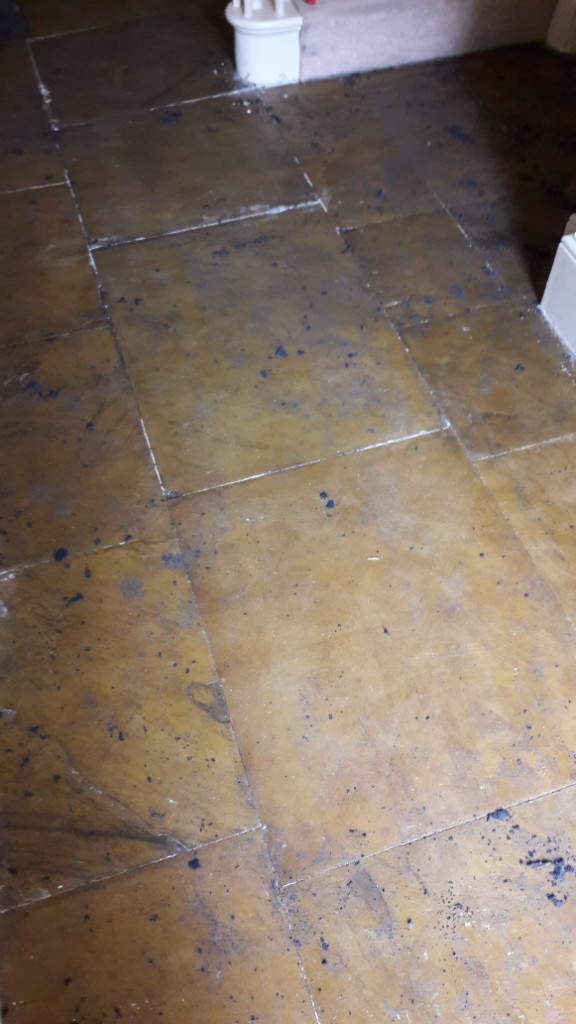 |
Stripping Carpet Adhesive off a Sandstone tiled floor
Our first task was to remove as much of the underlay by hand using sharp-bladed scrapers and a heck of a lot of elbow grease. Having done this, the next step was to cover the remaining adhesive layer with a specialist water-based stripper which was applied by brush and allowed to react for an hour. The result was an incredibly sticky substance with the consistency of chewing gum which we had to painstakingly remove inch by inch with paint scrapers. This process had to be repeated twice as even the specialist stripper couldn’t cope with the sheer volume of goo in a single application. The floor was then left overnight to dry out and settle down.
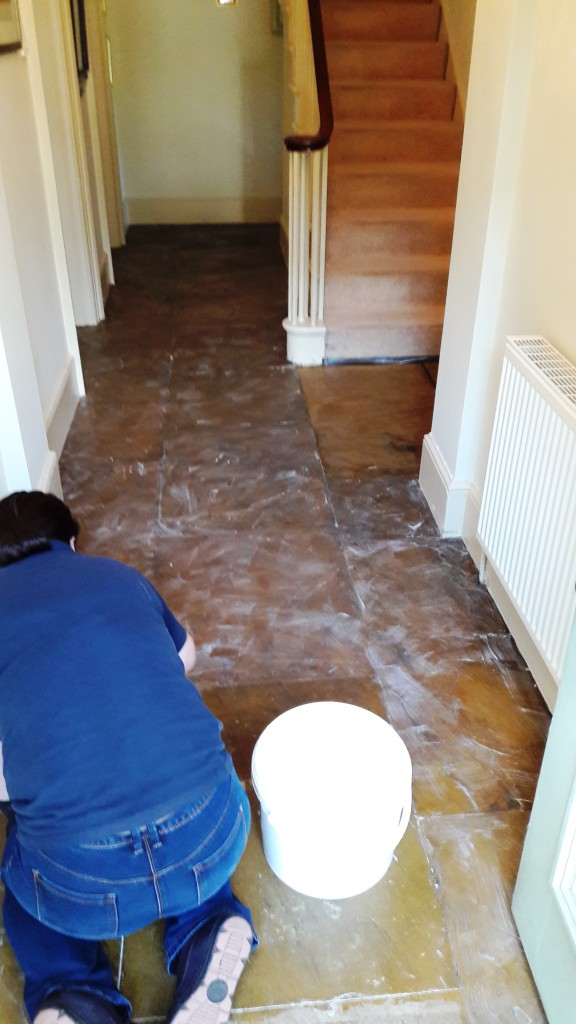 |
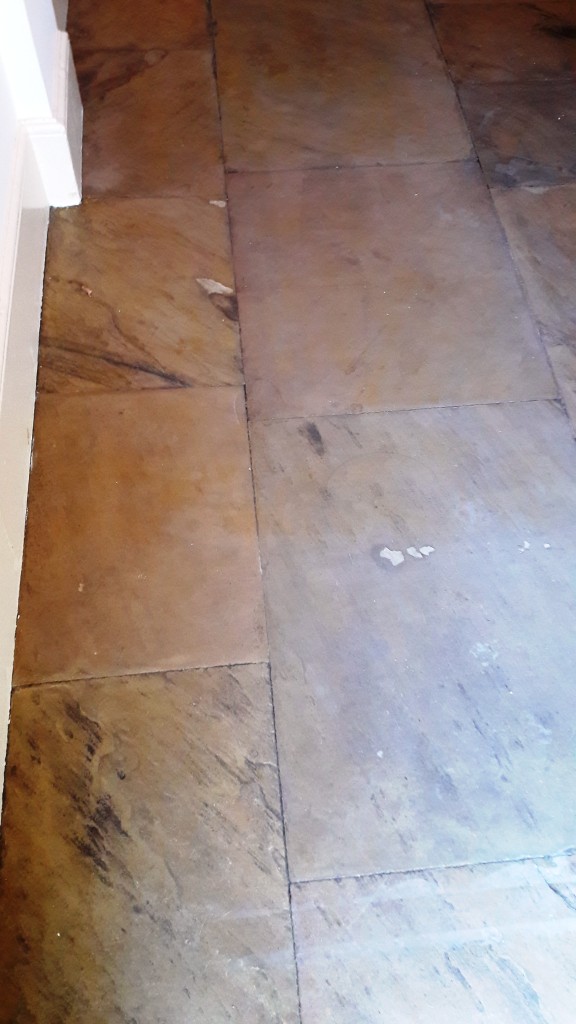 |
The following day, we deep-cleaned the whole area using very strong mix of Tile Doctor Pro Clean and Remove & Go, scrubbed in with a rotary machine fitted with a black stripping pad. Four pads were used up in this process as they quickly became clogged with the thick slurry which was then power rinsed and vacuumed away from the floor. Any remaining patches of the glue were further softened using Tile Doctor Nanotech HBU Remover and carefully picked off by hand with the bladed scrapers.
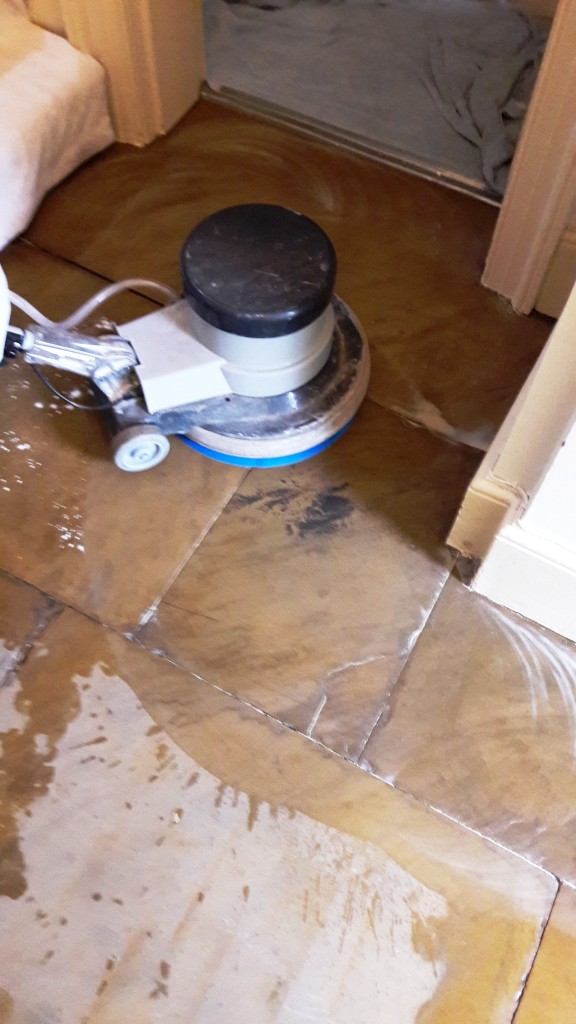 |
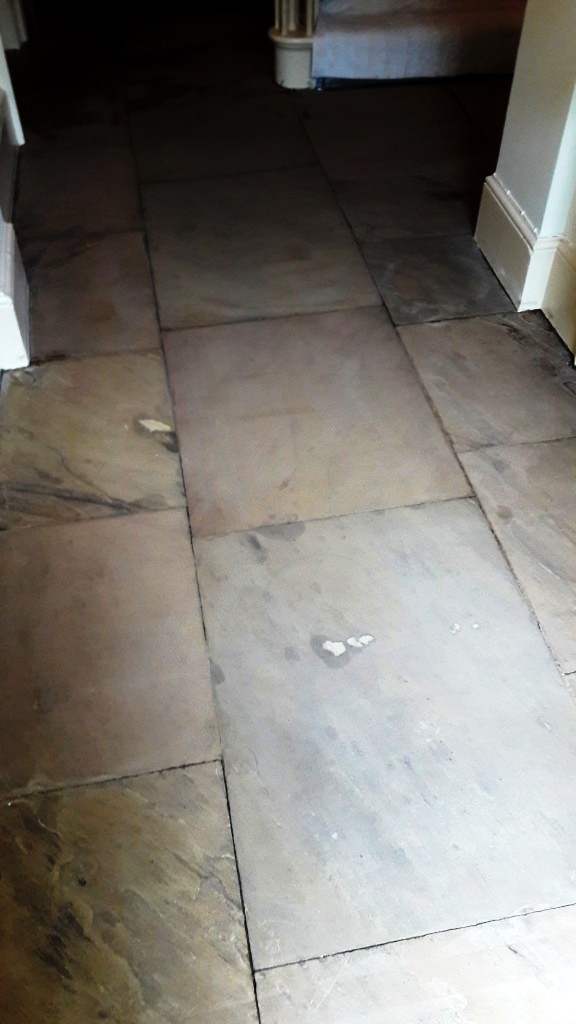 |
Finally, the slabs were finished using a brush fitted to the rotary machine with 320 grit honing powder to achieve a smooth, silky and very clean surface before being power rinsed with plenty of clean water. Again, the floor was left to dry thoroughly overnight with the assistance of our large capacity dehumidifier and thermostatic hot air blower.
Sealing a Sandstone tiled floor
Returning the following day, we found that the dehumidifier and heater had done their job and the sandstone was ready for sealing, the moisture content having been brought down to an average of 10% overall as shown by our damp meter testing.
The client had requested a light shine on the floor so that it would be easy to maintain on a daily basis. We chose, therefore, to use Tile Doctor Seal & Go, a combination sealer with a mid-sheen topical finish, which we applied using paint pads and microfibre cloths in five thin coats, resulting in an excellent fluid resistant seal with a lustrous shine.
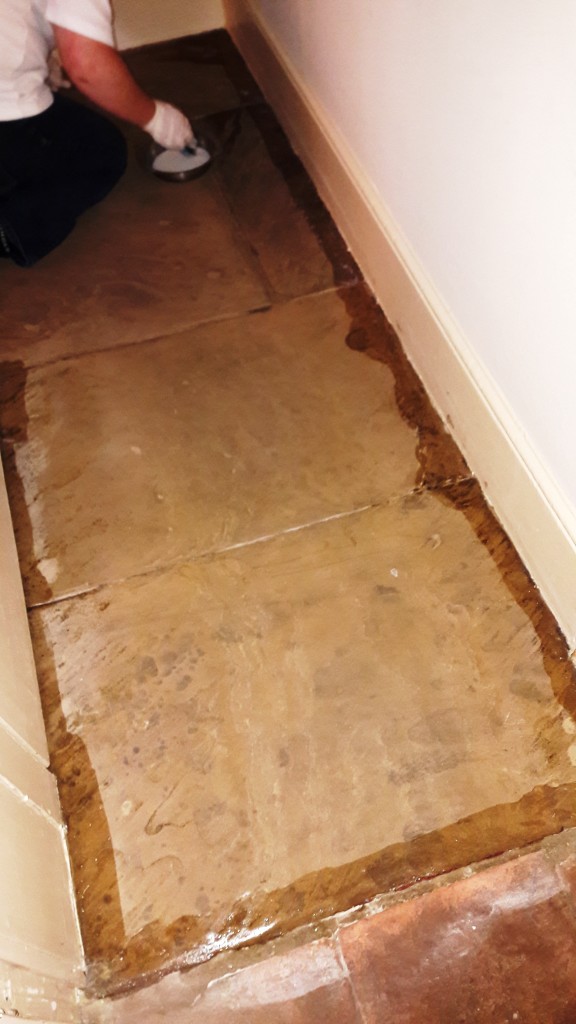 |
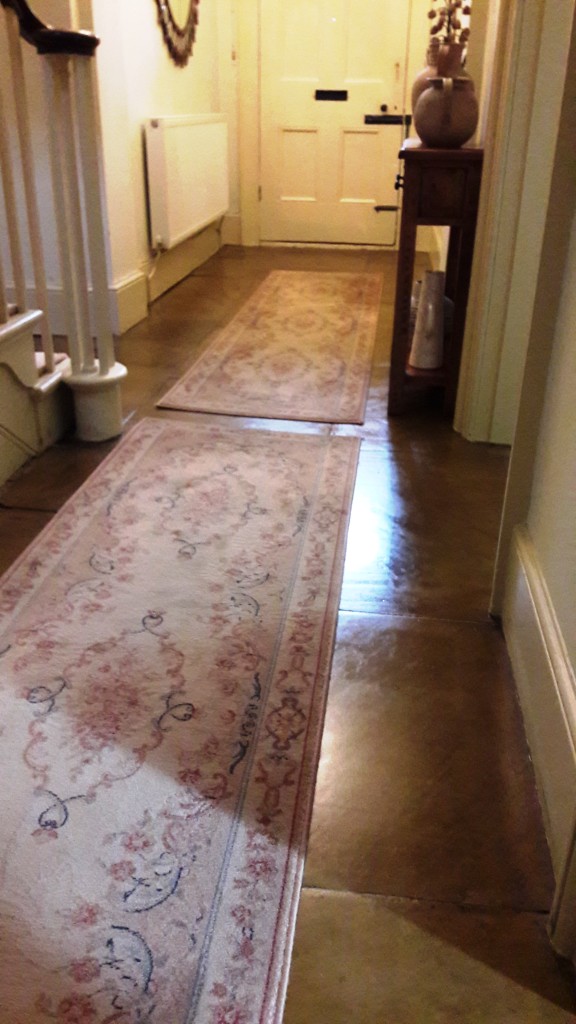 |
This was a tough job but a highly satisfying result, further emphasised when the client’s antique furnishings were placed in situ.
Source: Sandstone Tile Cleaning and Renovation Service in Norfolk
